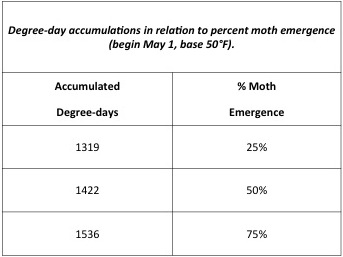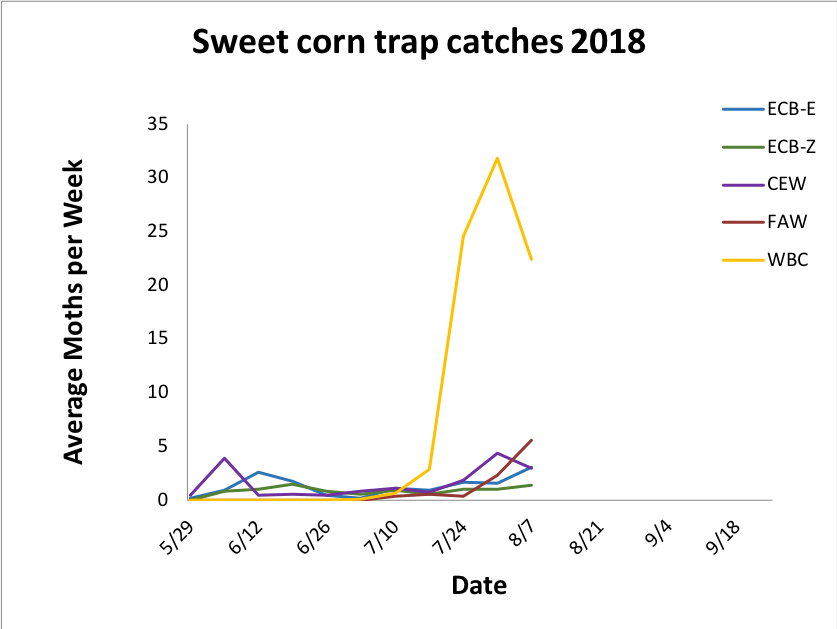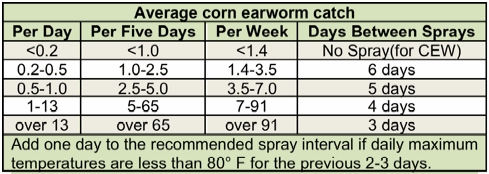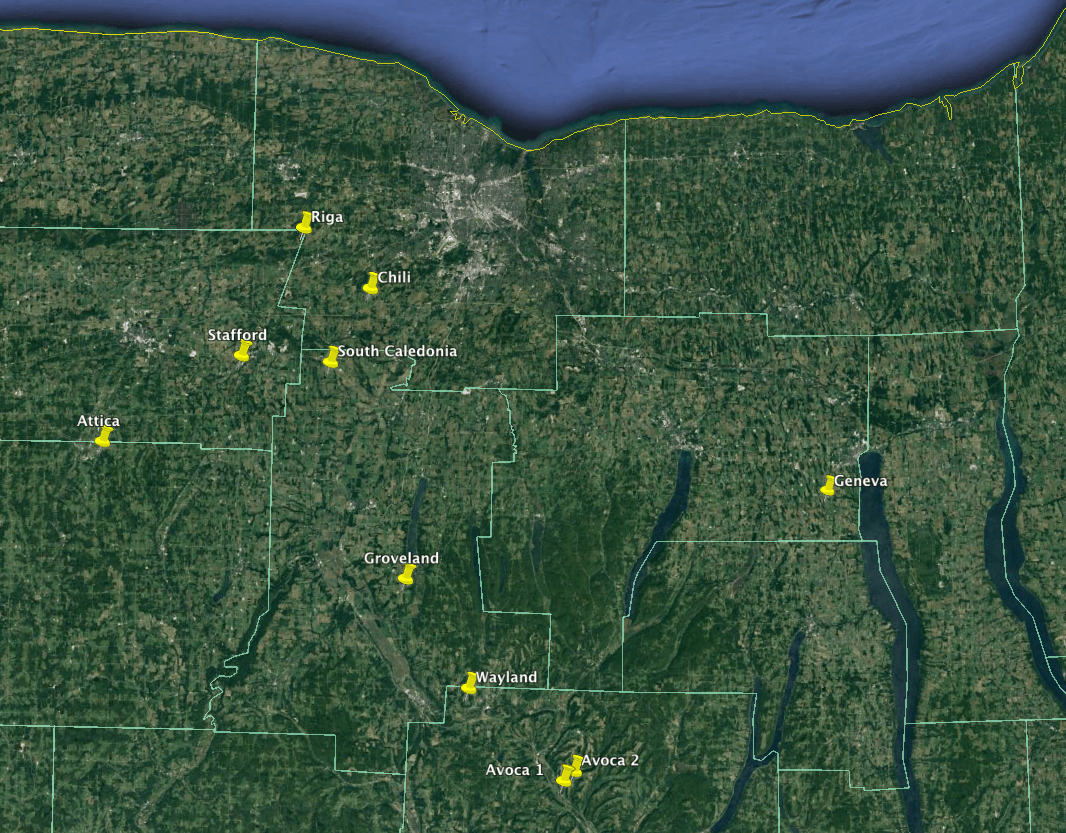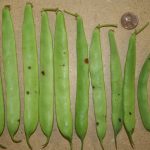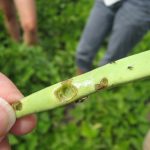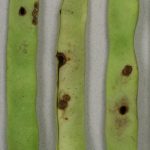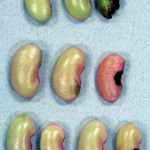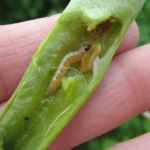Thirty-four of 38 sites reported this week. European corn borer (ECB)-E was caught at 13 sites and ECB-Z was caught at 9 sites. Corn earworm was caught at 20 sites with 11 sites high enough to be on a 4, 5, or 6 day spray schedule (see table below). Fall armyworm (FAW) was caught at 17 sites and Western bean cutworm (WBC) was caught at 27 sites.
Where CEW are being caught in high enough numbers to determine the spray schedule (see the chart below), those applications will be sufficient to take care of other worm pests that are present. Where CEW are not determining the spray schedule, scout to be sure other pests are not above threshold. Click on the scouting and thresholds information link to the right for more information.
The average degree days for the trap sites is 1746 base 50 (starting May 1), so the majority of WBC moths should have emerged according to the University of Nebraska model. Looking at the graph below it appears that WBC peaked last week and started to decline this week.
| Location | ECB-E | ECB-Z | CEW | FAW | WBC | DD to Date |
|
| Accord (Ulster Co.) | 3 | 1 | 1 | NA | 0 | 1808.7 | |
| Amsterdam (Fulton Co.) | 0 | 0 | 0 | 0 | 8 | 1737.4 | |
| Athens (Greene Co.) | 1 | 0 | 1 | 0 | 5 | 1949.2 | |
| Avon (Livingston Co.) | 0 | 0 | 3 | 1 | 27 | 1729.1 | |
| Baldwinsville (Onondaga Co.) | 0 | 0 | 19 | 5 | 47 | 1806.4 | |
| Batavia (Genesee Co.) | 12 | 0 | 3 | 1 | 9 | 1796.8 | |
| Bellona (Yates Co.) | 1 | 1 | 8 | 4 | 31 | 1851.6 | |
| Eagle Bridge (Washington Co.) | 0 | 0 | 1 | 0 | 3 | 1573.5 | |
| Eden (Erie Co.) | 0 | 0 | 2 | 0 | 16 | 1733.9 | |
| Farmington (Ontario Co.) | 0 | 0 | 1 | 2 | 4 | 1716.2 | |
| Feura Bush (Albany Co.) | 0 | 5 | 8 | 1 | 5 | 1744.0 | |
| Florida (Orange Co.) | 0 | 0 | 24 | 5 | 4 | 1890.0 | |
| Geneva (Ontario Co.) | 1 | 2 | 3 | 1 | 2 | 1794.9 | |
| Greenwich (Washington Co.) | 0 | 1 | 0 | 3 | 12 | 1573.5 | |
| Hamlin (Monroe Co.) | NA | NA | NA | NA | NA | 1685.3 | |
| Hurley (Ulster Co.) | 64 | 27 | 4 | 0 | 1 | 1882.0 | |
| Kennedy (Chautauqua Co.) | 0 | 1 | 0 | 8 | 4 | 1563.0 | |
| Kinderhook (Columbia Co.) | NA | NA | NA | NA | NA | 1876.0 | |
| King Ferry (Cayuga Co.) | 0 | 0 | 2 | 7 | 15 | 1788.2 | |
| Kirkville (Madison Co.) | 5 | 0 | 1 | 1 | 0 | 1778.5 | |
| New Paltz (Ulster Co.) | 0 | 0 | 1 | NA | 1 | 1809.4 | |
| Oswego (Oswego Co.) | 0 | 0 | 0 | 0 | 42 | 1721.8 | |
| Owego (Tioga Co.) | 2 | 0 | 0 | 0 | 0 | 1547.5 | |
| Pavilion (Genesee Co.) | 0 | 0 | 10 | 70 | 58 | 1446.2 | |
| Penn Yan (Yates Co.) | 0 | 0 | 0 | 30 | 17 | 1827.0 | |
| Peru (Clinton Co.) | 1 | 0 | 0 | 0 | 57 | 1624.4 | |
| Plattsburgh (Clinton Co.) | 2 | 0 | 0 | 0 | 223 | 1645.5 | |
| Plessis (Jefferson Co.) | 1 | 2 | 0 | 3 | 91 | 1679.0 | |
| Preble (Cortland Co.) | NA | NA | NA | NA | NA | 1727.5 | |
| Ransomville (Niagara Co.) | 1 | 0 | 0 | 0 | 29 | 1847.5 | |
| Schaghticoke (Rensselear Co.) | NA | NA | NA | NA | NA | 1907.8 | |
| Seneca Castle (Ontario Co.) | 0 | 0 | 1 | 4 | 2 | 1737.4 | |
| Sharon Springs (Schoharie Co.) | 0 | 0 | 0 | 0 | 0 | 1760.5 | |
| Sherwood (Cayuga Co.) | 0 | 0 | 0 | 14 | 27 | 1788.2 | |
| South Colton (St. Lawrence Co.) | 6 | 7 | 1 | 0 | 51 | 1422.0 | |
| Stone Ridge (Ulster Co.) | 0 | 0 | 1 | NA | NA | 1882.0 | |
| Tivoli (Dutchess Co.) | 0 | 0 | 0 | NA | NA | 1906.7 | |
| Williamson (Wayne Co.) | 0 | 0 | 0 | 0 | 0 | 1632.7 | |
| ECB – European Corn Borer CEW – Corn Earworm FAW – Fall Armyworm WBC – Western Bean Cutworm NA – not available DD – Degree Day (base 50F) accumulation since May 1st according to nearest NEWA station |
|||||||
| trap catches for the week of 7.31.18 – 8.7.18 |
|||||||
Dry Bean Western Bean Cutworm Alert
8.7.18
Marion Zuefle, NYS IPM Program
(Alert modified from Carol McNeil)
(Information and photos from T. Baute, OMAFRA)
This year we are monitoring ten WBC traps placed next to dry bean fields. The location of the traps are given in the image below. Dry bean growers should scout adjacent corn for WBC eggs and larvae when cumulative trap catch reaches 100 moths. Western bean cutworm (WBC) moths have reached this threshold at 9 of the 10 sites that we are monitoring. One site that has not reached threshold also did not report for one week, so it could also be at threshold. Once numbers are received they will be updated. The threshold indicates that nearby corn should be scouted for egg masses and larvae.
Peak WBC emergence occurred for several sites over the last two weeks (peak week indicated in blue, >100 threshold in red below). Dry bean pod scouting should begin 7-10 days after peak emergence, in those fields which have accumulated over 100-150 moths/trap, near fields with high trap counts, or where WBC has been found in bean pods/seeds in recent years.
| Dry Bean Location | 7.3.18 | 7.10.18 | 7.17.18 | 7.24.18 | 7.31.18 | 8.7.18 | Cumulative WBC |
| Attica (Wyoming Co.) | 2 | 4 | 32 | 105 | 154 | 57 | 354 |
| Avoca 1 (Steuben Co.) | NA | 0 | 2 | 37 | NA | 61 | 100 |
| Avoca 2(Steuben Co.) | NA | 2 | 30 | 101 | NA | 61 | 194 |
| Caledonia South (Livingston Co.) | 0 | 0 | 6 | 30 | 59 | 35 | 130 |
| Chili (Monroe Co.) | 0 | 1 | 8 | 54 | 81 | 51 | 195 |
| Geneva (Ontario Co.) | 0 | 0 | 4 | 24 | 41 | 31 | 100 |
| Groveland (Livingston Co.) | 0 | 0 | 5 | 76 | 110 | 161 | 352 |
| Riga (Monroe Co.) | 0 | 5 | 54 | 146 | 71 | 121 | 397 |
| Stafford (Genesee Co.) | 1 | 0 | 8 | 83 | 80 | 70 | 242 |
| Wayland (Steuben Co.) | NA | 2 | 3 | 11 | NA | 10 | 26 |
| Western Bean Cutworm trap counts by date NA – not available |
|||||||
WBC eggs, laid shortly after moth emergence, take 5-7 days to hatch. Pod feeding typically begins 10 days after peak moth catch. Early feeding by small larvae is generally minor and does not go into the pod. Growers in areas of concern should scout bean pin pods and larger pods for damage/feeding holes. Check 10 spots in a field, 5 plants per spot. WBC larvae hide in the soil during the day and won’t be seen on beans. If you find larvae in the pods during the day they are most likely European corn borer.
- Early damage made by small WBC larvae.
- Damage caused by slug feeding, note slime trail.
- Later feeding damage going through pod and into beans.
- Later feeding damage on beans.
- ECB larva in bean pod.
If you have questions contact Marion Zuefle at mez4@cornell.edu or 315-787-2379.
This project is funded by the NYS Dry Bean Industry.

